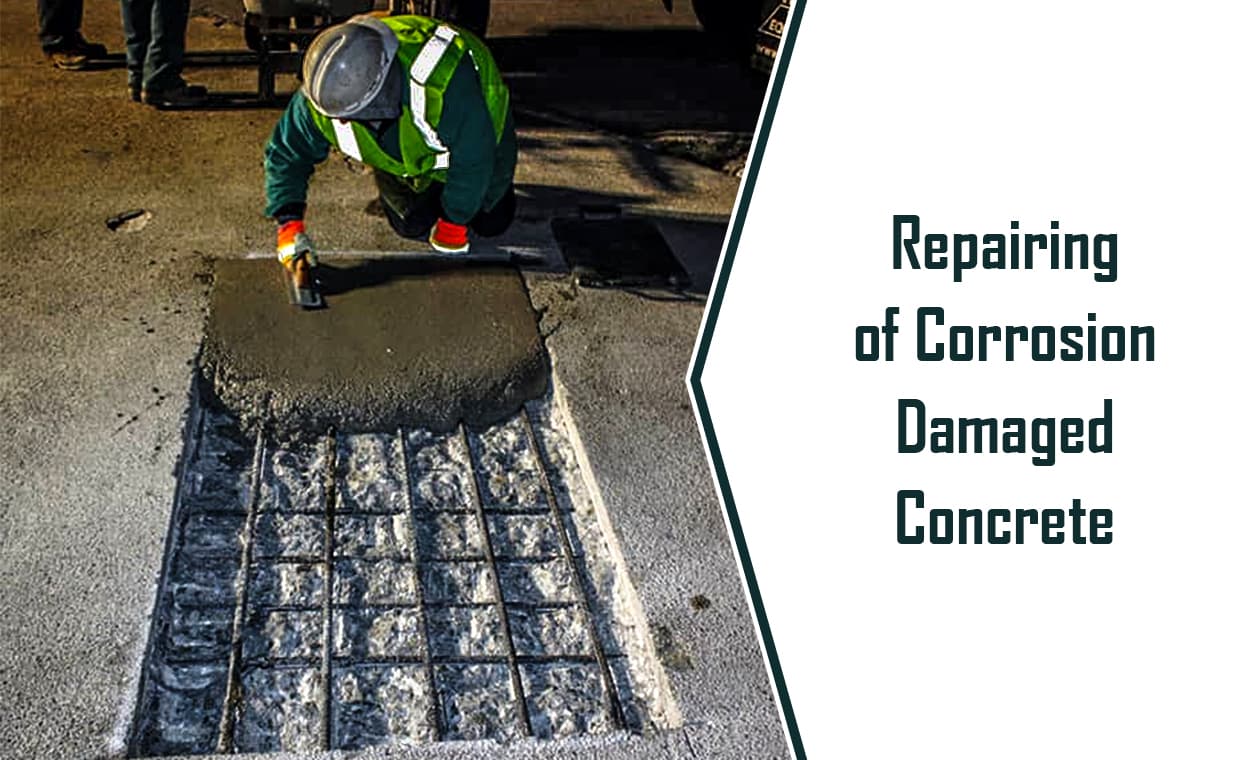
Reinforcement steel is the widely used material since it was invented. It is used in the concrete to achieve higher strength and stability of a structure. Nowadays it is popular all over the world as it provides high ductility to the structure. Reinforcement steel manufacturer produces high quality steel keeping in mind their various properties. They fulfil all the requirement of standards while manufacturing the different grade of steel. Though they fulfil all the required criteria, still reinforcement steel corrodes.
The environmental action, carbonation, chemical attack, design and construction defects, etc. are the various reasons which are responsible for the corrosion of rebars in concrete. We have already described various factors which cause corrosion of steel in concrete. Go through this easy guide. It is necessary to know the reasons of corrosion of rebars in concrete before you carry out repairing work.
Here is a simple guide on repairing of corrosion damaged concrete which helps to restore the corroded rebars of damaged concrete.
Repairing of Corrosion Damaged Concrete
Reinforcement corrosion is a process of degradation of steel. It happens due to the chemical reaction in concrete due to manmade or environmental action. During the degradation, the reinforcement bar decays and expands and increases its volume which may result into the cracking or spalling of concrete which lowers service life of concrete. Hence, corrosion needs to be repaired as soon as it appears in concrete. Corrosion is like cancer in building and proves costly, if not taken care of in initial stages.
Evaluation of the damaged concrete which is under corrosion
At the time of visualization of damaged concrete, if you observe the honeycombed concrete, the spalling or dislodging of concrete cover or marks of red/brown slurry near the cracks, it indicates that there is corrosion in concrete.
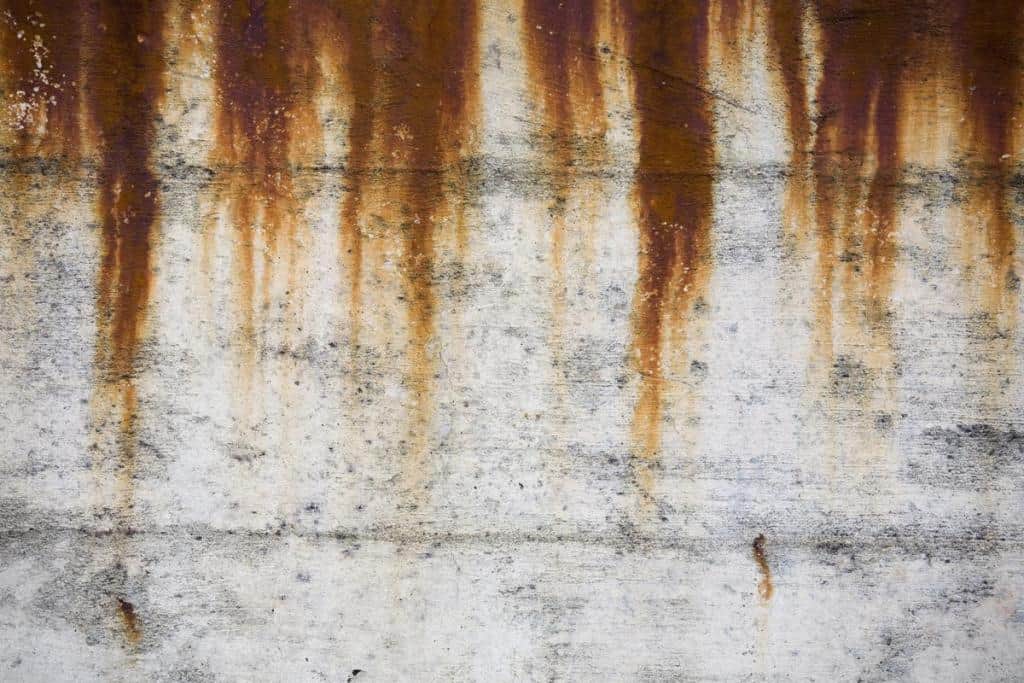
Evaluate the extent of damage by striking steel hammer or heavy metal object at the place of cracks/corrosion. Remove the damaged concrete (loose concrete) up to the extent until the striking of hammer sounds distinct ringing sound. Even though the concrete may sound with distinct ringing sound, again visualize the damaged area carefully and remove concrete up to the surface, where the reinforcement is found as good as it was placed at the time of construction. i.e. without any rust/corrosion film on it.
Do I Need to Add/Replace Steel
In some circumstances, where corroded steel has already lost its substantial sectional area due to corrosion, it is necessary to replace that steel with rebar/lap method. If the steel has minor corrosion, which means it has not started to degrade, then remove rust by applying the rust remover or with mechanical brushes. In this case, there is no need to replace reinforcement steel as it has needed sectional size/area.
Sometimes, it is not possible to see the damage of reinforcement corrosion with bare eye. In such circumstances, read the different methods, which are used to identify the risk of steel corrosion in concrete structure or contact nearby structural consultant or concrete experts at gharpedia-nearby professional.
Technique for Repairing of Damaged Concrete
The repair technique should be selected in such a way that the repairing material shall remain firm enough to stay for a long term, and also the time required to complete the repair work should be minimum.
Repair of damaged concrete which is under effect of corrosion is not a difficult job, but it is, of course, tricky job. One, therefore, needs to know the exact methods of repairing. Before you start repairing work.
There are a few simple steps which need to be followed:
- Remove all loose concrete.
- Remove Rust over the bars.
- Paint the steel with anti-corrosion paint.
- Apply Bonding agent on concrete.
Selection of suitable repair material i.e. polymer modified mortar (PMM), etc.
We have already discussed these valuable steps of repairing of concrete. Here we discuss the general methods or techniques to repair the damaged concrete which is under corrosion.
We are also discussing separately the repairing of entire building in another article. Here we will focus only on individual elements or small structures.
Use following repairing methods when you observe honeycomb, spalling, cracks or corrosion in concrete.
01. Repairing of Concrete with Polymer Modified Mortar (PMM)
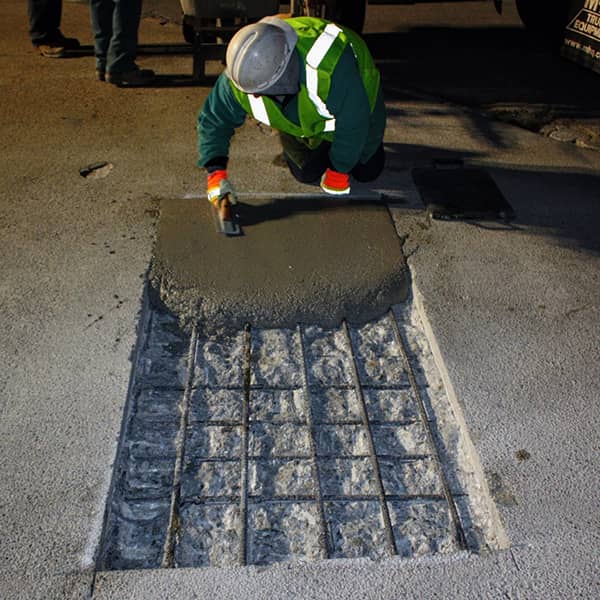
If spalling of concrete does not affect the strength of concrete, then patch repair is carried out manually with ordinary cement mortar. But sometimes the ordinary cement and mortar don’t adhere successfully to old concrete. In such case, use the readymade mortar (polymer modified cement mortars) to repair concrete. If the defect affects the strength of concrete, in that case, epoxy resin mortar can be used for concrete repair.
Nowadays formulation of cement mortar is modified by adding polymers which have many important properties. This formulation is also known as polymer modified mortar and they are readily available in the market. The polymer modified mortar is widely used to repair the patch of concrete. It is also used to get decorative cement overlays, ceramic tile adhesives, etc.
Add Adequate Cover:
Most of the time the corrosion is due to inadequate cover to beams, columns, slabs. Hence while doing repairing with PPM or even guniting, see that proper cover thickness is added, otherwise, the repair will certainly fail and you will loose all money.
02. Pressure Grouting or Cement/Epoxy Injection
Pressure grouting can be done with cement grout or epoxy grout. In pressure grouting method, cement or epoxy grout is injected under pressure in the thin and wide cracks or honeycomb. Firstly, loose concrete is removed from the thin and wide cracks or honeycomb. Their surface is sealed with rich cement mortar or polymer modified mortar and nozzles are fixed at the distance of 300 mm c / c. Finally, the grout is injected through the nozzles with the pressure pump either manually or mechanically at 2 m to 4 m head (2 to 4 kg/cm2).
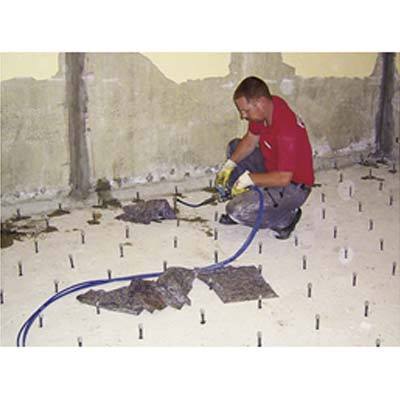
Cement grouting is widely used to repair the elements which does not requires high water or chemical resistance. i.e. floor slab, intermediate floor slab, intermediate columns, etc. Epoxy grouting is stronger and more durable than the cement grouting. It is highly resistant to water, chemicals, harsh environmental conditions, etc. Hence, it is used to repair the elements which are exposed to water. i.e. Roof slab, toilet/bathroom slab, outside column, foundation, etc.
Furthermore, epoxy grout has higher fluidity than the cement grout, and hence it is widely used to repair very fine cracks. Except that, depending on the requirement, you can use cement or epoxy grout i.e. you can use cement grout to economize the cost of repair or use epoxy grout to get the glossy surface, etc.
But remember that cement grout can absorb water and leave a stain when it gets dried. The ideal thing to do is, first do cement grouting and then do epoxy grouting. This will save cost and it will also fill finer voids not filled with cement grout. This is a preventive step to assert future corrosion.
03. Gravity Grouting
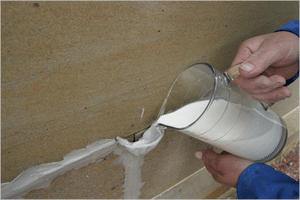
In gravity grouting, the cement or epoxy grout is done by creating the certain static head for filling the wide cracks. Static head generates the pressure in moderate amount. This method is cheaper than the pressure grouting. But the gravity grouting has its own limitation. It can be only used where cracks or other damages to concrete are minimal and can be filled by gravity flow.
04. Sealers and Coatings
Generally, the surface coating is used, where the quality of concrete is good, but the chances of the chemical attack are more due to environmental effect. The protective surface coating provides a water-repellent surface of the concrete.
Generally, the surface coating is used, where the quality of concrete is good, but the chances of the chemical attack are more due to environmental effect. The protective surface coating provides a water-repellent surface of the concrete.
Read the topic of sealing and coating of concrete in detail.
05. Guniting or Application of Shotcrete
Guniting or application of shotcrete is the oldest method of repairing concrete. In this method, the mixture of cement and sand in specific ratio and water is forcefully sprayed or shot from the nozzle using compressed air. The equipment consists of the compressor, spray nozzle, and flexible hose pipe. The size and working capacity of the machine depend upon the quantity of work.
The dry mix of cement and sand or readymade mortar named shotcrete is conveyed from the machine with the help of air pressure. The water is added to the nozzle by a separate connection for the hydration of the cement. The nozzle is designed in such a way that it automatically mixes the mortar and water and then the slurry is sprayed or shot over the repairing area.If the thickness of repaired portion is more than 25 mm, wire mesh of different diameter can be used.
Will Simple Plastering Work
Simple plaster will not work. Most people don’t understand the importance of repairing. They simply do plaster over the damaged concrete. Remember that it is just a cosmetic treatment. Here you are neither treating the bar nor adding extra cover and hence the spelling due to corrosion will reappear. This cosmetic treatment will cost you a lot in future.
Hence, knowledge of the repair methods and carefully following the steps of repairing method while you repair the house will help you. Also get it done from a person who has experience of doing repairs and not by an ordinary mason.
Nowadays builders and big companies are using concrete repair methods for the rehabilitation of old apartments of the modern world. But heck, they are cheap and sustainable compared to constructing a new house or apartment.
Take Preventive Measures
Please note that the repairs have arises due to many defects in design and construction. Hence it is never adequate to merely repair and gets certified. You have to diagnose the causes of corrosion, like leakage, porous concrete, inadequate cover, poor grade of concrete, aggressive environment, etc. With repair, you must take preventive steps and do these works which will not allow corrosion to occur again. Without this repair is meaningless.
Must Read:
How to Repair Concrete Cracks in RCC Structure or House?
Investigation & Repairing of Cracks in Brickwork
Image Courtesy: Image 1 – phoscrete , Image 2 , Image 3 – scotlime































